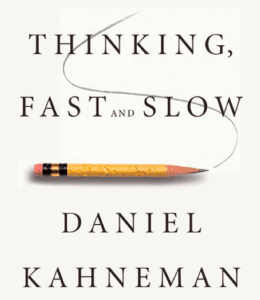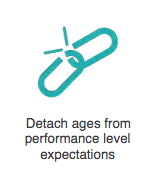Making Sense of the Learning Sciences
CompetencyWorks Blog
 I’ve been spending a year reading about the cognitive learning sciences and also about John Hattie’s work to review the effect of different strategies. Even with Bror Saxberg’s coaching (for which I’m deeply grateful), it’s been slow going for me, as I started with a pretty blank slate. I was also simply stuck. I was learning and my familiarity with the high level findings was growing, but I couldn’t figure out how to apply it. I was simply having difficulty making meaning for my work at CompetencyWorks because so much of the power of the cognitive learning sciences impacts practices of the teacher at a much more granular level than I encounter on my three- to five-hour school visits.
I’ve been spending a year reading about the cognitive learning sciences and also about John Hattie’s work to review the effect of different strategies. Even with Bror Saxberg’s coaching (for which I’m deeply grateful), it’s been slow going for me, as I started with a pretty blank slate. I was also simply stuck. I was learning and my familiarity with the high level findings was growing, but I couldn’t figure out how to apply it. I was simply having difficulty making meaning for my work at CompetencyWorks because so much of the power of the cognitive learning sciences impacts practices of the teacher at a much more granular level than I encounter on my three- to five-hour school visits.
I had two breakthroughs recently, and now connections are being easily made. First, when reading Thinking, Fast and Slow by Daniel Kahneman, I realized that his exploration of different systems of thinking, with System 1 operating automatically and involuntarily and System 2 operating with deliberation and reasoning, opens a door for us to challenge the bias that we bring into our work and our relationships. It opens the door for us to be more cognizant of the types of bias and how they impact the learning lives of children in our schools. Perhaps we can use the learning sciences to cleanse ourselves and our schools of bias.
Second, as we think about the competency-based cultures, structures, and pedagogical philosophy (one of which is that teaching should be grounded in the learning sciences), it’s important for us to test out how districts and schools are supporting teachers to use the cognitive learning sciences as well as those that influence engagement and motivation. In other words, what are the structures and reinforcements that make it easy for teachers to use the learning sciences, and are there ways in which districts and schools are creating obstacles that we should address?
To get started, I’ll turn to the Deans for Impact Science of Learning, by far the easiest summary out there. Let’s look at one of the three principles under How Do Students Understand New Ideas?
Cognitive Principle: Cognitive development does not progress through a fixed sequence of age-related stages. The mastery of new concepts happens in fits and starts.
Practical Implications for the Classroom: Content should not be kept from students because it is “developmentally inappropriate.” The term implies there is a biologically inevitable course of development, and that this course is predictable by age. To answer the question “is the student ready?” it’s best to consider “has the student mastered the prerequisites?”
Discussion on Implications for High Quality Competency-Based Systems: That is clearly one of the core concepts of competency-based education and what we try to capture when we say starting where students are or meeting students where they are. The idea that we would teach students based on age-based grade level standards even though they are already performing above that grade level or are missing big gaps that make it difficult or impossible to understand the new conceptual and process skills MAKES NO SENSE. But of course that is what most teachers are expected to do day in and day out.
Too often when I ask teachers about the idea of meeting students where they are during my visits, the answer is that they are providing scaffolding to access the curriculum. When I push (which is uncomfortable because who wants to be challenged in the middle of a busy work day by someone who has read all about your field but never walked in your shoes?) by asking if the students learn the prerequisite skills as part of that process so they don’t need scaffolding next time, I usually get a blank look. One teacher suggested it wasn’t part of her job. Her job was to teach the grade level standards. She admitted she knew that the student needed something else. I’ll never forget her face – part shame, part frustration – when she said, “I have to make a choice. I can either teach the student where they are, but that is setting them up for failure when they have to take the state test at the end of the year, or I can at least introduce them to what it is going to be on the test, which just seems more fair.”
If we take this principle of the cognitive learning sciences to heart, what would be the culture, structure, and pedagogical principles you would want to see in place in a competency-based district and school:

- Decouple Performance Levels and Grade Levels: In the draft paper Meeting Students Where They Are (final to be released by early 2018), the authors make the case that we need to decouple performance levels from age-based grade levels. Districts and schools can certainly continue to have age-based grades, as there are benefits from creating strong communities of learners. However, those districts that are shifting to multi-age bands are reporting that it is very beneficial in helping teachers take into consideration student readiness and focus in on the those very granular skills or quickly address misconceptions before they take firm hold.
- Think of the Continuum of Learning as Centered Around Students: Instead of thinking about grade-level standards, there needs to be a transparent learner continuum that captures the range of skills of all of your students in your school and beyond. Thus, middle schools’ learner continua would need to include elementary school levels and reach into high school.
- Instructional Familiarity with Multiple Performance Levels: Teachers are going to need to be familiar with instructional strategies at multiple performance levels. Or perhaps a better way to think about it, as that may be asking a lot of a new teacher, is that schools need to think about how they organize the school and deploy teachers to meet the needs of students. Better yet, if PLCs have autonomy, they can organize themselves to meet the different needs of students. State laws about credentialing and whether students can be taught higher level studies also need to be updated to ensure they are aligned with this principle of the learning sciences as well.
- Access to Learning Resources/Curriculum: Related to the preceding point, students and teachers need access to the curriculum or learning resources that will allow students to work at their zone of proximal development. When schools or teams of teachers prepare resources and assessments (let’s call them units) pre-organized for the entire learner continuum (computers help but I’ve seen plenty of schools that have it organized into notebooks), students can access directions and resources when they are ready. That’s why you hear that teachers stop thinking about lesson plans and start thinking in terms of packages of resources (or units) around specific learning targets or groups of targets.
In talking with educators, it seems to me that there are different strategies for different scenarios based on where students are in learning the foundational math and literacy skills, their social-emotional learning, and the capacity of the school and educators to provide intensive support. In K-5, it makes sense to do flexible grouping of students around math or literacy concepts and skills to make sure they are building the strong base of skills they will need in upper grades. In high school, when students have gaps, grouping students with lower reading levels around lower level text only makes sense if there are clear strategies to help them build their skills. Otherwise this is just a form of tracking. The other option is to adopt strategies such as close reading, in which all students are reading the same level text with differentiated levels of support. Wouldn’t it be helpful if we had a set of strategies to make the approaches to meeting students where they are explicit, sharable, and even measurable so we can test ourselves to see if they are working?
I’ll stop here. There are many other structures and supports that need to be in place to ensure that schools are organized around this principle of cognitive science. The worst offenders, of course, are the federal and state policies that reinforce age-based grade level accountability assessments and are essentially anti-learning. I get heated when I say it. But it needs to be said. Accountability policies that require all students to take the same test organized around age-based grade level standards are anti-learning. They have served their very valuable purpose in making inequity in the American education system transparent.
It is time for us to move on. We are ready.
See also: